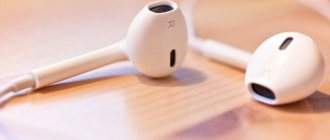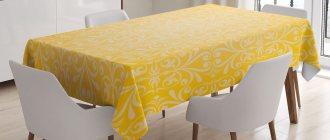Are you expecting guests or are you planning to cook something delicious for your family. But the canned delicacy in a jar with a screw cap from your preparations does not open. Don't be too upset. No matter how big or small the jar is, no matter what it contains, there is always a way to open it using available materials and items found in your kitchen or household.
Jars with screw caps
Such jars with screw-on lids are widely used when storing supplies for the winter. They are easy to use and significantly save time and physical effort compared to classic lids, which require the use of a seaming device when closing. In addition, these covers can be reused multiple times.
In this article we will look at simple ways to open a jar with a screw cap. I will show you the reasons why problems arise with opening such a jar.
How to open a glass jar without a glass opener?
This is the most common question, especially when the jar contains lightly salted cucumbers, fragrant jam, and assorted fruits. The can is placed on a smooth and rough surface. We determine the center of the closed part of the can and hit it with moderate force. But you shouldn’t use too much force to avoid injury.
After the impact, a notch is formed in the lid. If it is not there, then the blow is repeated. The result of all actions is the presence of raised edges of the tin. As a result, it is simply removed from the bottle. Do not handle the cover with your bare hand to avoid injury. It's better to take a clean towel.
There is another way to open a rolled up can without an opener - this is to hook the edge of the tin with a knife and pull it up so that the inner space connects with the outer one. Such hooks are made along the entire contour and the lid can be easily opened. The knife should be used very carefully so as not to break the glass edge and injure yourself. Direct all movement against yourself, as there is a possibility that the knife will slip.
The next option is to use a simple spoon instead of a bottle opener. The closed jar is placed on a hard table and held with one hand. In the other we hold the spoon, with the curved side facing us. Its rounded edge is installed on the rim. Next, we make reciprocating movements until the tin is wiped. Important. The cutlery must be made of durable material, otherwise there is a chance that it will burst or bend.
Tips for reusing lids
Whatever canning lids are used, the following conditions must be met:
- the lid is not deformed, its surface has no mechanical or chemical damage;
- During storage, conditions must be maintained in which the lids will not oxidize or be damaged. The room where they are stored has normal temperature and humidity;
- When using lids of any kind, they must be thoroughly sterilized.
Special techniques and folk ingenuity will help you open any jar with tasty preparations. Even if there are no special devices at hand.
Rate this post
How to get the contents of a tin can?
The lid on the can is held on by squeezing the edges of the walls. In this case, you should use pliers. We bend the side and, for example, canned corn is available for eating.
Another way is to use a kitchen knife if you don’t have a special canning knife. Be sure to wipe the jar from dust so that dirt does not get inside. We place it on a flat, non-slip surface. We apply the cutting object to the edge of the can and lightly hit it from above.
A hole appears in the jar. We make movements in a circle without jerking. We do not cut the lid until the very end. Leave a small area intact and fold back the lid.
Why don't jars with screw caps open?
Understanding the reason why screw caps are difficult to open follows from the principle of their operation. Before preservation, jars and lids must be heat treated for sterilization. They should spend several minutes in boiling water or over steam.
The inside of the lid has a gasket that fits tightly to the edge of the jar. After closing the jar and as it cools, the pressure in it drops and a vacuum effect is created. Due to the pressure difference, the lid seems to “suck” to the container.
This is one of the main reasons, but there are others, I’ll list them all:
- the pressure outside the can is greater than inside;
- when preserving jam, honey and some other products, the lid “sticks”;
- When opening, your hands slip and there is no way to hold the jar and lid.
Remember: when closing, the lid rotates clockwise and opens counterclockwise.
Screw cap removed
Before opening the jar, you need to carefully examine it: you may have to abandon this activity. Pay attention to the lid - if it is swollen, then the food in the jar is already spoiled. If cracks are found on the can, there is a possibility of air getting inside, which also leads to damage to the workpiece.
How to deal with a rolled up lid.
With a lid that screws on, you will have to tinker extra, since you won’t be able to open it quickly without an opener. Initially, remove fat from the container, tin and hands. Then wrap the lid with cling film. To reduce slipping, we use rubber gloves. Hold the can tightly and twist the container.
Another way. The can is installed so that the tin is at table level. Then it is rolled edgewise on the table. At the same time, you should not put too much pressure on her. The lid will bend, and when you hear a popping sound, you can try to remove it.
How to use a knife to open?
As a rule, if you don’t have a special opener at home, you always have a knife. And if you need to open canned food on a hike, you may have a pocket or penknife at hand.
The algorithm of actions is as follows:
- The jar should be placed on a stable surface, preferably on a table. If this is not available, put it on your knees, or place it between your legs and hold it tightly. If this is not done, it may jump to the side when impacted, and the knife will slip and cause a cut;
- Position the tip of the knife vertically to the lid. There is no need to keep it tilted or at an angle. You need to hold the knife in such a way that your hand does not slip onto the blade;
- With your second hand you need to hit the handle of the knife, and then the hand that is holding the handle. After this, the tip of the knife will pierce the lid in the selected place;
IMPORTANT! It is not recommended to hit with great force, otherwise you may lose control and the knife will slip and injure you. After this, the knife needs to be moved 1-1.5 centimeters and the next puncture made in the same way;
- Make several punctures throughout the lid, that is, the holes should be around the entire circumference with a small distance between them; Next, you need to insert the knife into any of the holes, pry it off and lift the lid.
Many people use this method a little differently, sawing through the lid with a knife blade. The option of making several holes is most preferable. If you saw through the lid with a blade, then, firstly, you can ruin the knife, and secondly, metal shavings from the lid will most likely get into the product that is in the jar.
How to twist correctly
Closing the jar with a screw lid is quite simple; for this you will not need any machines or keys; it will be enough to screw it clockwise, after heating it first, so the hot lid will fit more tightly to the glass. However, you should not tighten it tighter than the thread allows, otherwise there is a risk of damaging it. The cover should be installed so that it fits onto the thread, then screw it on. It is recommended to tighten the canned food immediately after filling the jar, without overfilling it - the contents should not exceed 1 cm to the edge.
Using hot water
- Fill the pan with hot water from the tap, literally 1-2 cm (so that the water catches the lid, but does not reach the glass). It is advisable to warm it up a little more on the stove, but do not bring it to a boil.
- Place the jar in the water upside down with the lid on. Of course, by this time the pan should be removed from the stove.
- Wait 1 to 2 minutes. You should hear a pop. This means that the jar can be taken out and opened.
Hot, evaporating water will slightly “relax” the food that has dried in the neck of the container. That is, this method is best suited if you suspect that you cannot open the jar due to hardened ketchup.
By the way! With the same success, the jar can be placed under the tap so that a stream of hot water flows thinly onto the lid. After a minute it should open. But in this case there are two problems: firstly, everything in the room can get wet due to splashes; secondly, the water from the tap may not be hot enough (but in this case, just pour the jar from the kettle, but carefully so that the glass does not overheat and burn your hands).
Any sharp object (without keeping the lid)
The lid will come off easily if a little air gets inside the jar. That is, if you can simply pierce the lid (with a table or can knife, a thick fork, or even a nail or two), you will be able to turn it without difficulty.
Important! When opening this way, remember safety precautions: keep the can pressed to the table, hit with a knife aimed, but not from above.
But! This method will not work if the lid is held in place not due to the difference in pressure (in the room and in the jar itself), but because it has dried out. For example, sometimes when jam or ketchup is rolled up, some of the contents fall onto the walls of the jar, which are located under the lid. The food dries out and “cements” the lid. In this case, the following method will help...
How to use a can opener?
The very first canned foods were made in the eighteenth century for army food. The container for them was large, heavy, and for a long time various tools were used to open it - a hammer, chisel, bayonet, chisel, and sometimes guns.
Types of can openers
Modern models differ from simple can openers in a more complex mechanism, shape, and blade length. Devices designed for easy and quick opening of cans are equipped with various additions: wheels, magnets, motors and handles.
These models meet the most modern hygienic requirements. Thanks to the modern design, the metal of the opener does not come into contact with the contents of the can. When opening, you can be sure that metal particles or microorganisms will not get on the food.
To work with can openers effectively, you need to know the features of various models and choose the right one.
Manual openers
Simple manual can openers are the most durable retro models, found everywhere since Soviet times. They consist of a handle - wooden or plastic, and a working part. The key has a sharpened blade and a small hook that is convenient for prying tin lids off glass jars.
Mechanical keys
Homemade machines consist of two levers and a thumb, which, when turned, cuts off the lid of the can.
Advantages of a mechanical opener:
Automatic openers
Caution should be exercised when children are around before replacing batteries or cleaning the device.
Electric cars
Capable of opening any number of cans as quickly as possible. The electric opener consists of:
Portable and stationary electric models are widely available. Portable ones operate with batteries; you can take them with you on hiking trips, fishing, or to the country house. Desktop accessories operate on mains power only.
Multifunctional types of openers with various additional accessories, wall-mounted and table-top, are also produced.
What to look for when choosing a bottle opener
When purchasing you need to consider:
To choose the most correct and successful model of a can opener, you need to determine what types of cans or bottles the device will open. And also how often it will be used.
If you need a small and universal model that can be used to open iron cans, cans or bottles and used occasionally, then a manual opener would be the best choice.
When choosing, you need to pay attention to quality. A good material for manufacturing would be stainless steel. The handle should be made of wood, plastic or rubber and firmly fixed.
There should be no defects or roughness on it.
If you need an opener that can quickly and effortlessly open several cans, then a mechanical device will be the best choice. It is the most convenient and less dangerous. But when purchasing a mechanical opener, you must remember that you will need a separate device to open bottles.
When choosing an automatic device, the quality of the tool is important. The best models are made with a body made of metal or high-strength plastic. Automatic openers are convenient, reliable and durable. But we must remember about timely replacement of nutrients. When taking the device with you on a hike or to the country, you need to purchase an additional set of batteries.
Electric models are very convenient for frequent use. But they are not cheap, so before purchasing you need to carefully read the instructions and the warranty period.
How to open a tin can?
Video: How to open a jar with a wheeled knife?
To open a tin can with a mechanical can opener, you need to use the blade to pierce the metal from the top. The device is attached to the side on the side, rotates and gradually opens the can when you turn a special twister by hand. With this tool you can handle a lot of cans.
The automatic machine operates using ordinary inexpensive batteries. To work, you need to attach the device to the top of the canned food and turn it on by pressing the button. Before using the automatic opener, you must carefully read the instructions. It is strictly forbidden to open cans that are under high pressure, aerosols, or containers with flammable liquids.
Before working with an electric knife, carefully study the instructions for use. It is necessary to attach the cutting roller correctly to avoid cuts. And while opening, hold the container with one hand.
Using a bottle opener
No, not the one that is sharp and for canning (although it will also help, but you will have to throw away the lid after opening). We have created our own model for iron lids. She looks like this:
And by the way, the opener is designed in such a way that it fits lids of any size. The smaller diameter clamp is hidden in the handle of this can opener.
Safety precautions
Safety precautions should be followed when opening tin and glass cans. The best way to open containers is not with improvised means, but with an opener specially designed for this. Modern manufacturers offer consumers a huge number of modifications of this tool. The best option is one with a wheel, as it is the safest.
If you have a lot of different types of canned goods in your house, it is advisable to purchase an electric opener. It easily opens various types of lids - canning, metal sealing, screw-on. In addition, it is used for bottles.
When choosing how to easily open a rolled up jar without an opener, you need to choose a safe method so as not to cut yourself with the sharp edges of the can or glass container shards. Care must be taken to ensure that metal or glass particles do not get into the product. If this happens, you should say goodbye to the dish without regret.
Of course, any jar can be opened using improvised means, but it is much easier, when going on a hike, a picnic or to the country, to make a list of necessary things and pack a bag or backpack in exact accordance with the notes. It is better to open glass containers at home in advance and transfer their contents to plastic containers or plastic bags. This way, food will take up less space, it will be easier to carry, and you can prepare lunch quickly and without extra effort.
Methods for opening a jar
In most cases, jars open easily, but sometimes you may encounter a number of difficulties. Someone can simply knock, and the lid can be unscrewed without difficulty, but not always. You can suffer for hours and not get the desired result. Fortunately, there are plenty of proven ways to deal with an unruly lid. Let's list them.
However, in the latter case you should be extremely careful: if the jar is cold and the water is very hot, the glass may crack.
Source
Methods for glass jars
Seaming caps
Jars sealed with metal screw caps can be uncorked by hand or with a knife. The main thing is to do everything carefully so as not to get injured during the work. The container should be placed on a flat, non-slip surface. When opening manually, you need to hit the center of the lid with your elbow, crushing it and forcing the edges to rise. The air trapped inside the container helps to unscrew the cap without effort.
Instead of an elbow, it is better to use a hammer or the handle of a knife.
Twisting
Jars with screw-on accessories are opened by hand, wrapping the lid with a towel and applying force. Often this requires male strength. If you cannot uncork the container this way, you can use the thermal method. You need to act in the following order:
You should not squeeze the jar with your feet or press it towards you, as you can easily crush the fragile glass.
The next simple way is to tap the edges of the product with the handle of a kitchen knife. The closed container is firmly placed on the table and tapped around the perimeter of the lid. Usually after this it opens easily.
You can carefully place the jar on its side and, holding it by the bottom and sides, “roll” it along the edge of the table. This creates uniform pressure on the edges of the lid. You must act carefully so as not to drop or damage the glass container.
How to avoid splashes and foam
When you open a bottle of canned beer, carbon dioxide gas escapes and protein molecules hold it in, resulting in foam. If you want to drink beer in a civilized manner, without abusing alcohol, then before opening the container, observe the following points:
- Beer should be cooled before drinking.
- Do not shake the bottle or can immediately before opening.
- When pouring a drink into a glass, hold the glass at an angle to reduce foaming.
Beer should be stored at a temperature of 4 to 5 degrees Celsius. It should also be poured into a clean, well-washed glass. Otherwise, residual detergent may cause the foam to disappear quickly.
What to do if the ring on a beer can breaks?
We've all experienced that annoying situation where you open a can of beer or soda and the ring comes off before it can pierce the metal part. The result is an unopened jar, thirsty and spoiled. The main thing is not to panic in such situations, but to act with improvised means that even a girl can handle.
- You can use the handle of a spoon or fork to knock out the metal plate underneath the ring.
- Make a hole with a nail or pierce it with sharp scissors.
- Press the metal plate with a flat wrench.
- You can use something hard and blunt to press on the hole.
- Using a can opener or the point of a regular knife, press down on the normal tear.
- You can press the hole with your thumb, but be very careful when doing so. It is recommended to first protect your thumb from cuts.
Girls may be interested in the article about the calorie content of beer.
To reduce the discomfort of opening the ring, simultaneously lift the ring off the bottle and press with your thumb where you want it to push through. This will reduce the pressure on the ring and reduce the likelihood of it breaking.
The bottle opener uses the lever principle and can be easily made independently from various household items and improvised materials. However, be careful because if the bottle breaks or breaks, you may be injured.
If possible, use a bottle opener











